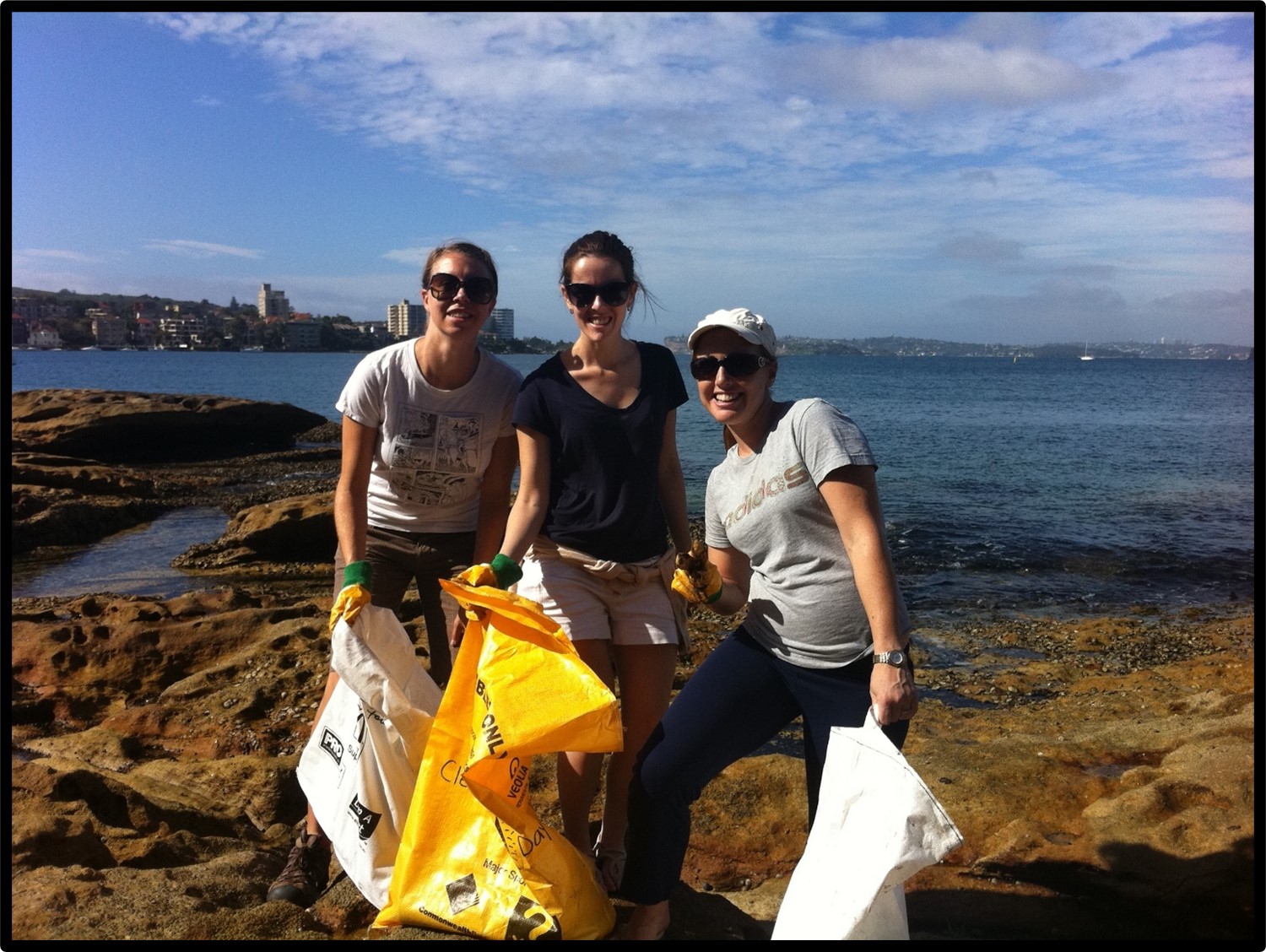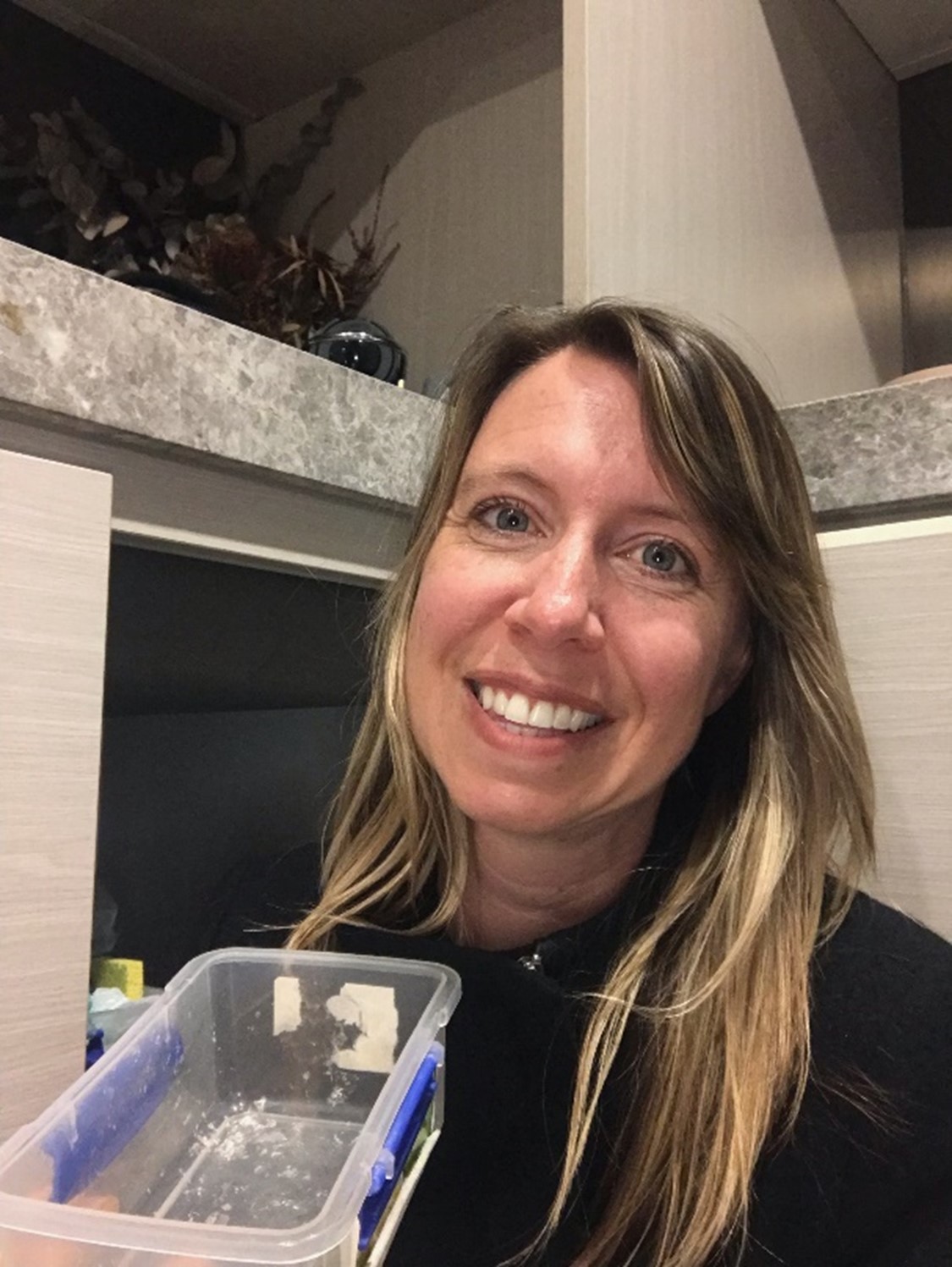Belinda Chellingworth is a circular economy expert. She's worked in the sustainability profession for decades with some of Australia's biggest brands and names. But some of her most important lightbulb moments have come from her own personal journey in reducing waste. As a committed 'garbologist', Belinda reflects on the waste revolution over the decades – and shines a light on how we all have the power to make positive change.
What was life like when you first thought about all that stuff that goes to landfill? Do you remember? Or are you yet to start kicking your red bin's butt? For me, it was a very different time, I was just a teenager, ready for world domination – and it was a very different place when it came to waste.
Back in my uni days circa 2000, I was much more known for cruising a well-worn path down Sydney's M2 in my red Ford Laser, blaring tunes from Regurgitator, Grinspoon and the Foo Fighters. I'd screech into the toll gates, throw coins (yes, cash tolls!) into the machine and then veered off to uni, completing my science degree in biodiversity.
At the time, I remember understanding the issues around litter. As an 80s child, Australia's wildly successful 'Do the Right thing' campaign was baked thoroughly into my mind. The quote and logic that "all drains lead to the ocean" in the movie Finding Nemo, released around the same time, also reminded me litter would eventually find its way into the sea.

[Picking up litter on Clean Up Australia Day with friends Natalie Christiansen and Alicia Lloyd]
The Council provided our family with a black tub in the 90s, to save recyclables from our red landfill bin. So recycling was already a way of life. I was dismayed that the pub I worked for at the time didn't recycle any of its TAB paper – so I carted it home, all still perfectly blank on one side, and wrote my uni notes on the back of the horse racing times.
The deli lightbulb moment
I was also working nights at a supermarket deli - plastic shopping bags were given away as standard, polystyrene takeaway packaging was the norm (imagine!) and, if the deli BBQ chickens weren't sold, they were simply binned. It felt so wrong to throw away edible food. But I had no real awareness of the impact of food waste in landfill – nor really what a landfill actually was!
Based on the ethical issues alone, I made sure they were all sold on my shifts, reducing their prices and spruiking the sweet deal over the loudspeaker, in my best 'fancy lady advert' voice.
From clothing to coffee cups
Once I'd finished uni, I went backpacking, quickly realising you did need a LOT of savings (oops!), but didn't need a whole wardrobe to survive, and managed with only what fit into my 20L Kathmandu backpack. Also becoming aware of the issues new clothing production caused, and I discovered a treasure trove of second- hand clothing on Ebay, which was gaining popularity.
In 2010, I caught the coffee bug at my first office job in Sydney. Luckily, KeepCup had just launched, and thrilled with this Australian innovation, I bought my very own reusable cup, used it daily, and have now avoided over 4,000 single use cups (and yes, that's a lot of coffees).

[KeepCup to the rescue! Choosing to reuse became a way of life.]
One action inspires another
Venturing off overseas again, my reuse habit quickly transferring to a straw, then after seeing Rebecca Prince-Ruiz OAM, the Founder of Plastic Free July, whip her reusable cutlery set out in a London restaurant, I distinctly remember thinking, "I want to do that!" and that quickly followed.
Personal action back home
I arrived back in Australia in 2017, and was excited to see Councils introducing food and garden organics (FOGO) kerbside bin services, just like in London. This complemented my worm farm, which never coped with all my scraps.
More and more the additional benefits of reducing waste became apparent, once I started using a Sodastream for bubbly water, and a reusable menstrual solution, I was also saving a lot of faff, money and plastic waste!
The REDcycle scheme had been launched, meaning we could drop soft plastics off to supermarkets, so I began diligently separating and dropping it all off.
However, being an avid 'refuse and reduce' girl, I kept chipping away at reducing it in the first place. I'd already broken up with shopping bags, glad wrap and menstrual products, but I'd look in my bin and think "Ok, what's next?!" – there was always something more to tackle, and it became equally addictive and empowering.
Recipe for reducing food and plastic waste
I ain't no foodie or Nigella. Far from it (think Bridget Jone's blue soup). But I did want to reduce my food miles, and signed up to a veggie box delivery, coupled with the odd trip to the farmers' markets, and unintentionally reduced a lot of packaging.
'Zero waste shops' started popping up, where I would buy pasta, muesli, chocolate and tea, in my own containers every few weeks.
Saying goodbye to the big red bin
All these actions combined, I realised I didn't need a great big red bin taking up precious space anymore. So, I replaced it with a single Tupperware container to collect the small amount of landfill waste I still produced.

[I still produce landfill, but much less these days]
What else has been happening, and what does the circular future look like?
On a national scale, we now have a target to halve food waste by 2030, single- use plastic bans and container deposit schemes are being rolled out.
And the future?
I'm excited to see more reuse solutions becoming available - even candles and dog food come in swappable systems now.
Innovation now allows more, e.g. renting a dress for a special event via ecommerce, and community-driven initiatives like clothes swaps, tool and toy libraries are much more widespread.
As for what lies ahead, fast fashion and packaging are definitely on the government hit list, and I'm also watching the 'right to repair' movement gain momentum, which will hopefully mean some of the big barriers, like access to spare parts and navigating software headaches, are alleviated, so we can use things for much longer.
So how can you make a difference?
No one person can solve everything and even as 'garbologist' dedicated to waste prevention, I still produce some landfill. And as a professional in the field, I am giving you a 'permission slip' for things that are necessary, but for now, in the 'impossible to avoid or recycle' basket, like bandaids!
To combat the overwhelm – I've found that picking one thing, concentrating on eliminating or swapping it out, with a solution that works for you, and feeling good about the win, works.
This attitude has served me well and it can serve you too.
Now, go you good thing!
Guest blog written by Belinda Chellingworth
Bel is a circular economy expert, speaker and dedicated 'garbologist' who lives on Gadigal Country in Sydney.
When not peering in the nearest bin, she is doing something ocean related, adoring her Staffy or corrupting the Alto section of a community choir near you.

